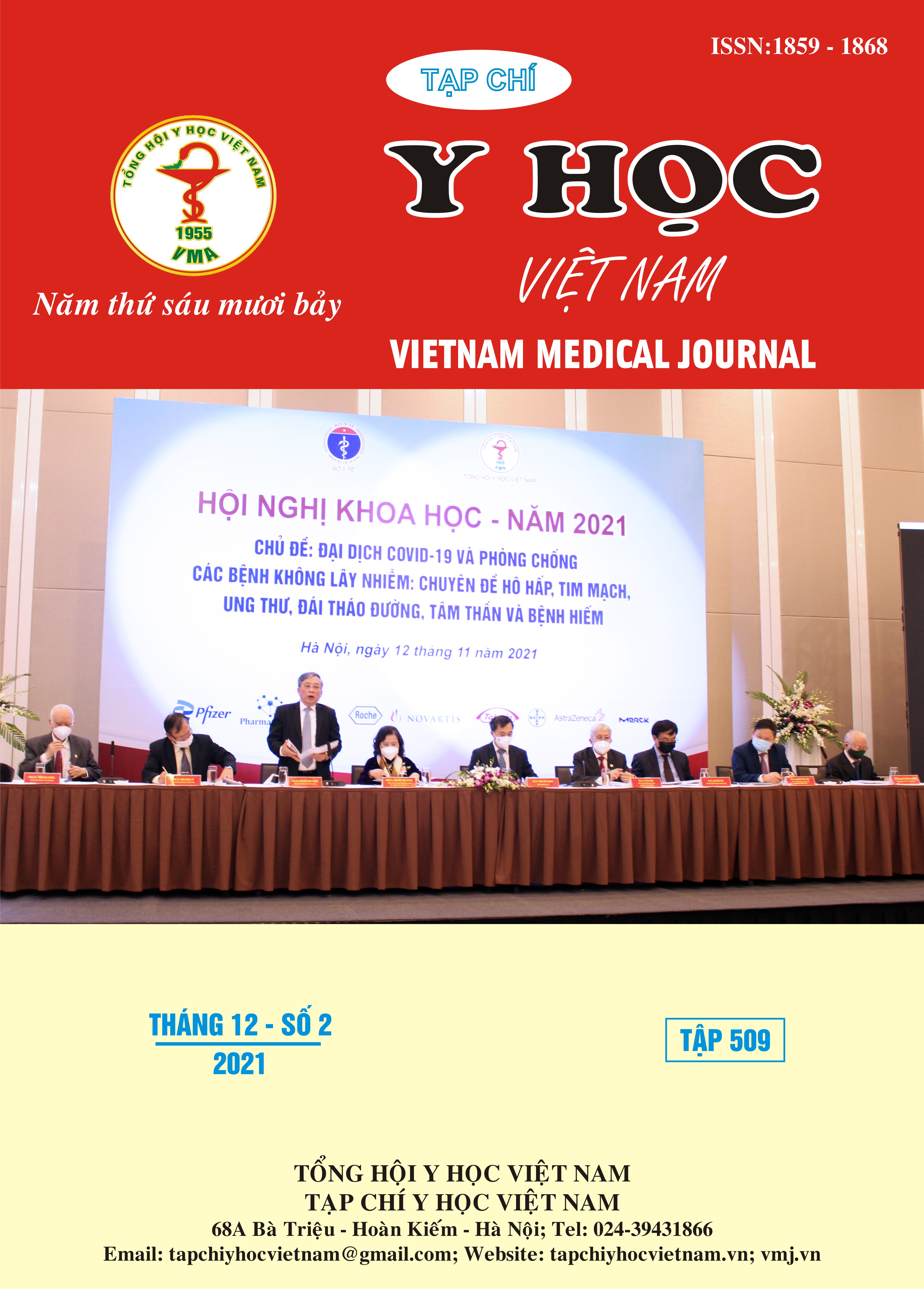CLINICAL AND SUBCLINICAL FEATURES OF MARGINAL ZONE LYMPHOMA (MZL) AT THE NATIONAL INSTITUTE OF HEMATOLOGY AND BLOOD TRANSFUSION
Main Article Content
Abstract
Objectives: Todescribethe clinical and subclinical characteristics of patients with Marginal zone lymphoma (MZLs) at the National Institute of Hematology and Blood Transfusion from January 2015 to October 2021. Methods: A cross-sectional study was implemented among 86 MZLspatients. Results: All 3 types including MALT (73.3%), NMZL (20.9%) and SMZL (5.8%) were found in our study; the more common affected locationswere the stomach (25.6%) and the eyes (24.4%). The proportion of men was higher than women (58.1% and 41.9%, respectively). The mean age of MALT, NMZL and SMZL patients were 54.6; 52.8 and 55.8 years old, respectively. The incidences of B symptoms (7.9%), anemia (20.6%), lymphadenopathy (1.6%), splenomegaly (0%)in MALT group were statistically lowerthan those in NMZL and SMZL groups.The MALT group also hadthe rates of low hemoglobin concentration (20.6%), low platelet count (4.8%), high white blood cell count (9.5%), myeloid cell morphological disorder (11.1%), increased density of bone marrow cells (7.9 %), bone marrow invasion (11.1%) and positive-Ki67>30% (11.1%) lower than those of NMZL and SMZL groups. There was no histopathological difference between the 3 groups of MZLs. Conclusion: MALT is the most common type of MZLs and has the differences in clinical and subclinicalfeatures in comparison with NMZL and SMZL.
Article Details
Keywords
MALT, NMZL, SMZL, MZL
References
2. Campo E., Swerdlow S.H., Harris N.L. et al (2011). The 2008 WHO classification of lymphoid neoplasms and beyond: evolving concepts and practical applications. Blood, The Journal of the American Society of Hematology, 117(19), 5019-5032.
3. Türkkan G., Alkan A., Paydaş S. et al (2020). Demographical and Clinical Features of Marginal Zone Lymphomas: A Retrospective Study of Turkish Oncology Group (TOG). Indian J Hematol Blood Transfus, 36(4), 640-645.
4. Knauf W., Abenhardt W., Koenigsmann M. et al (2021). Rare lymphomas in routine practice - Treatment and outcome in marginal zone lymphoma in the prospective German Tumour Registry Lymphatic Neoplasms. Hematol Oncol, 39(3), 313-325.
5. Nakamura S., Ponzoni M. (2020). Marginal zone B-cell lymphoma: lessons from Western and Eastern diagnostic approaches. Pathology, 52(1), 15-29.
6. Zucca E., Arcaini L., Buske C. et al (2020). Marginal zone lymphomas: ESMO Clinical Practice Guidelines for diagnosis, treatment and follow-up✰. Annals of oncology, 31(1), 17-29.
7. Mazloom A., Medeiros L.J., McLaughlin P.W. et al (2010). Marginal zone lymphomas. Cancer, 116(18), 4291-4298.
8. Alderuccio J.P., Lossos I.S. (2020). Prognostic factors and risk of transformation in marginal zone lymphoma. Ann. Lymphoma, 4, 1-14.
9. El-Hawary A.K. (2006). Histopathological assessment and immunohistochemical study of nasopharyngeal low grade MALT lymphoma. J Egypt Natl Canc Inst, 18(2), 103-108.


